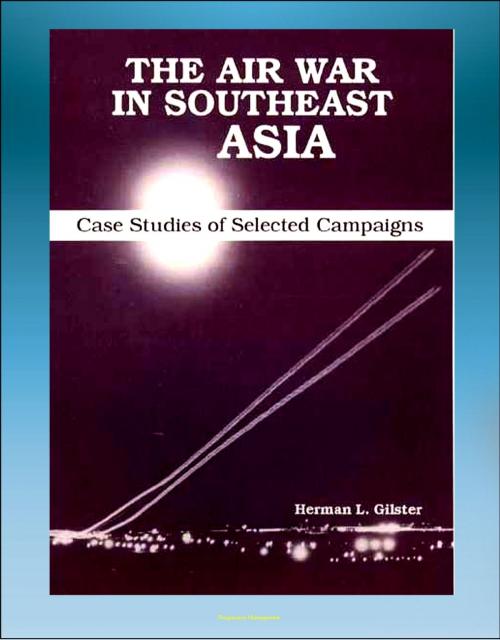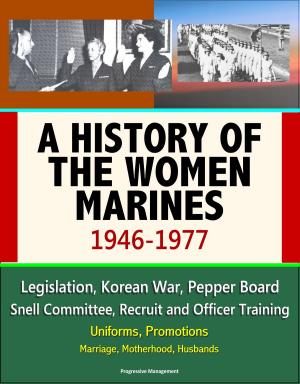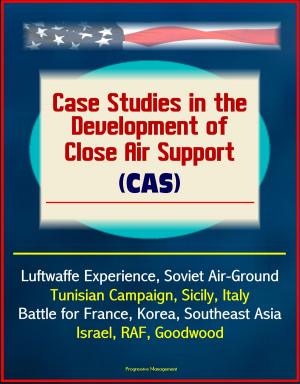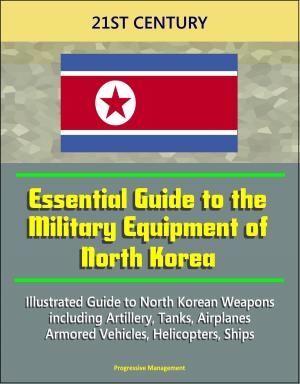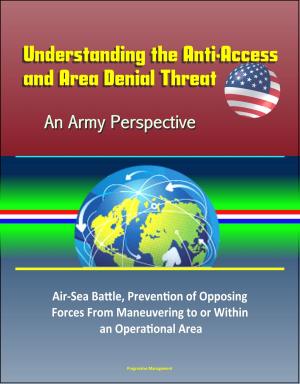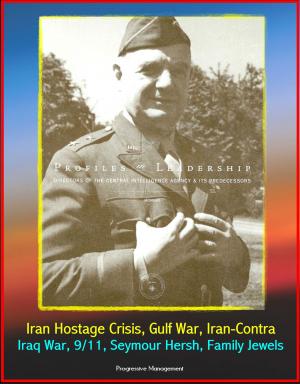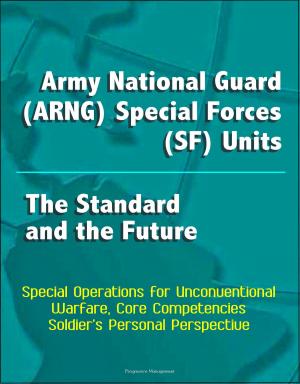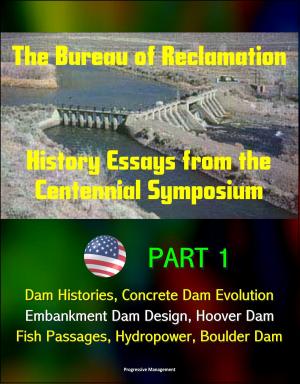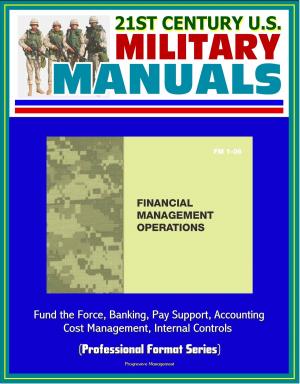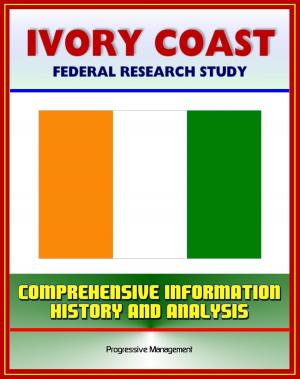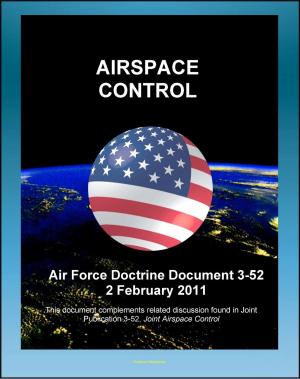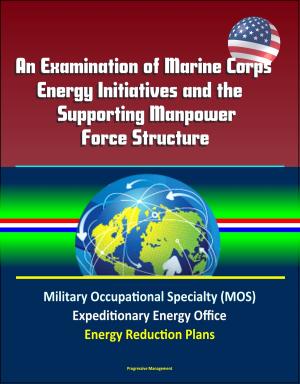The Air War in Southeast Asia: Case Studies of Selected Campaigns - Vietnam War, Ho Chi Minh Trail, Linebacker, All-weather Bombing, Strike Patterns, Campaign Impact
Nonfiction, History, Military, Vietnam War, Asian, Aviation| Author: | Progressive Management | ISBN: | 9781476374918 |
| Publisher: | Progressive Management | Publication: | June 23, 2012 |
| Imprint: | Smashwords Edition | Language: | English |
| Author: | Progressive Management |
| ISBN: | 9781476374918 |
| Publisher: | Progressive Management |
| Publication: | June 23, 2012 |
| Imprint: | Smashwords Edition |
| Language: | English |
The author subjects five case studies of interdiction, close air support, and strategic bombardment to rigid analysis. Dr. Gilster shows the relationship between the strike effort and target damage of several air campaigns during the Vietnam War. The purpose of this book is to fill that void by presenting a set of case studies that subject selected air campaigns during the Southeast Asia era to rigid economic analysis.
The war in Southeast Asia lasted for nine long years and proved to be the most controversial of all US wars. This book presents five case studies conducted during that war involving three missions of air power—interdiction, close air support, and strategic bombardment. A major purpose of the book is to pull together these previously classified studies under one cover, set to a central theme based on lessons learned (and relearned) in Southeast Asia. To put the air campaigns in their proper historical context, however, a brief summary of US air participation in Southeast Asia should prove useful. Although US air units had participated in the war in Vietnam earlier, major air participation can be dated from congressional passage of the Gulf of Tonkin Resolution in the fall of 1964. Soon thereafter, in early 1965, the US initiated Operation Rolling Thunder and began air strikes against North Vietnam. The campaign began with strikes against lines of communications targets just above the demilitarized zone between North and South Vietnam. Slowly the bombing campaign crept northward toward Hanoi and Haiphong, the major cities of the North, striking not only lines of communications but also petroleum, oil, and lubricants (POL), electrical power, and some industrial targets.
Contents * FOREWORD * Chapter 1 * OVERVIEW * Air War Summary * Case Study Preview * Notes * Chapter 2 * AIR INTERDICTION IN PROTRACTED WAR—AN ECONOMIC EVALUATION * World War II to Southeast Asia * Air Operations in Southern Laos * Geography and Climate * Ho Chi Minh Trail * The Commando Hunt Campaigns * The Estimated Results * Observations * Notes * Chapter 3 * THE COMMANDO HUNT V INTERDICTION CAMPAIGN—A CASE STUDY IN CONSTRAINED OPTIMIZATION * The Objective Variable * The Inputs * The Production Function * Variable Input Costs * Economic Evaluation * Graphical Review * Notes * Chapter 4 * CLOSE AIR SUPPORT IN SOUTH VIETNAM, 30 MARCH-31 MAY 1972 * The Ground Scenario * US Air Buildup * Construction of the Model * Responsiveness of Air * Cumulative Impact of Air * Notes * Chapter 5 * LINEBACKER II—USAF BOMBING SURVEY * Bombing Results by Target Category * Railroad Yards * Storage Facilities * Radio Communications Facilities * Power Facilities * Airfields * Surface-to-Air Missile Sites * Bridges * Damage Summary * Release System Accuracy and Employment * Weather Constraints and Implications * Actual versus Predicted Target Damage * Comparisons by Target Category * Summary Comparison * Campaign Lessons * An Expanded Target List * Strikes against Enemy Defenses * All-Weather Bombing Capability * Strike Phasing * Strike Patterns * Single Manager for Air * Campaign Impact * Notes * Chapter 6 * ON WAR, TIME, AND THE PRINCIPLE OF SUBSTITUTION * Our Experience with Germany * Our Experience with North Vietnam * Some Comparisons * Notes
The author subjects five case studies of interdiction, close air support, and strategic bombardment to rigid analysis. Dr. Gilster shows the relationship between the strike effort and target damage of several air campaigns during the Vietnam War. The purpose of this book is to fill that void by presenting a set of case studies that subject selected air campaigns during the Southeast Asia era to rigid economic analysis.
The war in Southeast Asia lasted for nine long years and proved to be the most controversial of all US wars. This book presents five case studies conducted during that war involving three missions of air power—interdiction, close air support, and strategic bombardment. A major purpose of the book is to pull together these previously classified studies under one cover, set to a central theme based on lessons learned (and relearned) in Southeast Asia. To put the air campaigns in their proper historical context, however, a brief summary of US air participation in Southeast Asia should prove useful. Although US air units had participated in the war in Vietnam earlier, major air participation can be dated from congressional passage of the Gulf of Tonkin Resolution in the fall of 1964. Soon thereafter, in early 1965, the US initiated Operation Rolling Thunder and began air strikes against North Vietnam. The campaign began with strikes against lines of communications targets just above the demilitarized zone between North and South Vietnam. Slowly the bombing campaign crept northward toward Hanoi and Haiphong, the major cities of the North, striking not only lines of communications but also petroleum, oil, and lubricants (POL), electrical power, and some industrial targets.
Contents * FOREWORD * Chapter 1 * OVERVIEW * Air War Summary * Case Study Preview * Notes * Chapter 2 * AIR INTERDICTION IN PROTRACTED WAR—AN ECONOMIC EVALUATION * World War II to Southeast Asia * Air Operations in Southern Laos * Geography and Climate * Ho Chi Minh Trail * The Commando Hunt Campaigns * The Estimated Results * Observations * Notes * Chapter 3 * THE COMMANDO HUNT V INTERDICTION CAMPAIGN—A CASE STUDY IN CONSTRAINED OPTIMIZATION * The Objective Variable * The Inputs * The Production Function * Variable Input Costs * Economic Evaluation * Graphical Review * Notes * Chapter 4 * CLOSE AIR SUPPORT IN SOUTH VIETNAM, 30 MARCH-31 MAY 1972 * The Ground Scenario * US Air Buildup * Construction of the Model * Responsiveness of Air * Cumulative Impact of Air * Notes * Chapter 5 * LINEBACKER II—USAF BOMBING SURVEY * Bombing Results by Target Category * Railroad Yards * Storage Facilities * Radio Communications Facilities * Power Facilities * Airfields * Surface-to-Air Missile Sites * Bridges * Damage Summary * Release System Accuracy and Employment * Weather Constraints and Implications * Actual versus Predicted Target Damage * Comparisons by Target Category * Summary Comparison * Campaign Lessons * An Expanded Target List * Strikes against Enemy Defenses * All-Weather Bombing Capability * Strike Phasing * Strike Patterns * Single Manager for Air * Campaign Impact * Notes * Chapter 6 * ON WAR, TIME, AND THE PRINCIPLE OF SUBSTITUTION * Our Experience with Germany * Our Experience with North Vietnam * Some Comparisons * Notes
